Saturday, April 06, 2019
Latholeth
Continuing from here....
Rehashing the main point. From 1880 to 1920, beadboard served as a caste signal. When you were in the Beadboard Zone, you were working or serving. When you were in the Plaster Zone, you were in the leisure class, being served.
I've used a lot of beadboard in my digital models from those years.
Here's the typical use inside a business building:
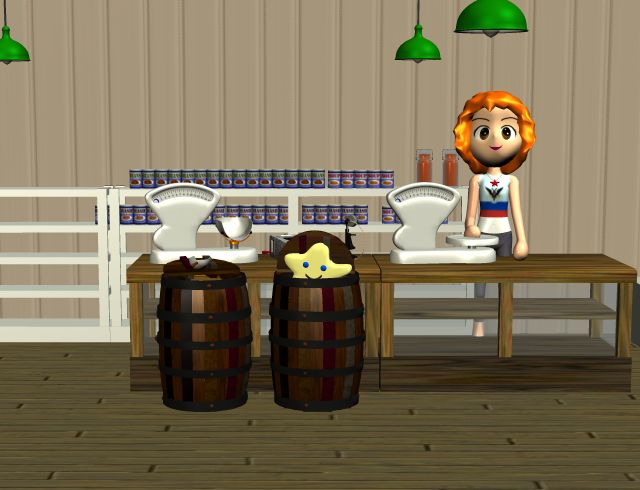 And inside the little Box Depots:
And inside the little Box Depots:
 Here's an example of the typical use on a house:
Here's an example of the typical use on a house:
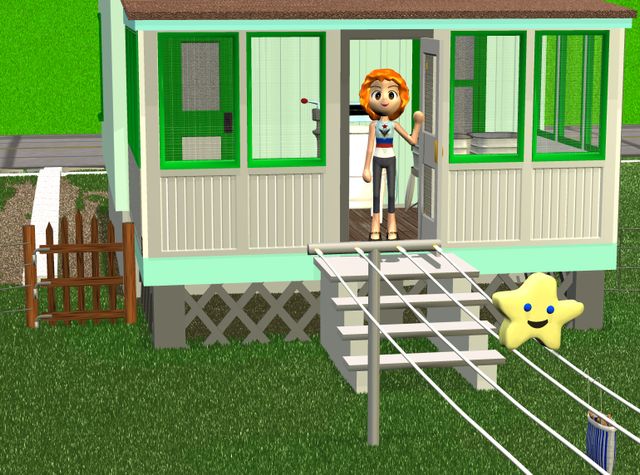 = = = = =
On a house, the Beadboard Zone, even when built at the same time, was lighter and looser than the Plaster Zone. Usually the Beadboard Zone was on concrete blocks or piers, while the Plaster Zone was on a real basement.
Because it was an add-on, it's hard to find Beadboard Zones in old books of house plans. I have lots of Dover plan books, and I've only found two examples.
Here's the typical add-on, sold separately by Aladdin:
= = = = =
On a house, the Beadboard Zone, even when built at the same time, was lighter and looser than the Plaster Zone. Usually the Beadboard Zone was on concrete blocks or piers, while the Plaster Zone was on a real basement.
Because it was an add-on, it's hard to find Beadboard Zones in old books of house plans. I have lots of Dover plan books, and I've only found two examples.
Here's the typical add-on, sold separately by Aladdin:
 And here's a unique experience-based plan from a book of 1910-ish plans:
And here's a unique experience-based plan from a book of 1910-ish plans:
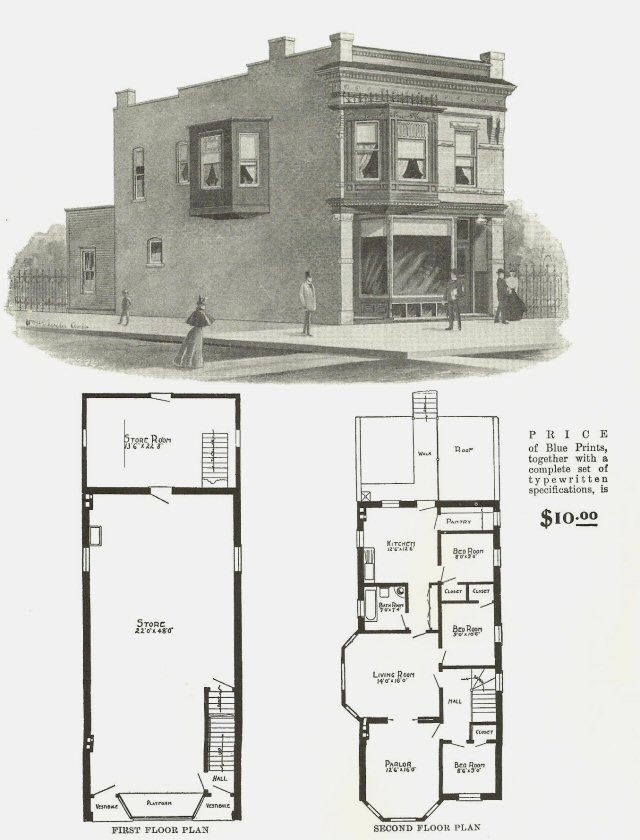 An architect wouldn't design a building this way. If the store was intended to have a storage room on the back, an architect would include it in the main walls. This plan must have been drawn from a real structure 'as built'.
You can see the different thickness of the walls:
An architect wouldn't design a building this way. If the store was intended to have a storage room on the back, an architect would include it in the main walls. This plan must have been drawn from a real structure 'as built'.
You can see the different thickness of the walls:
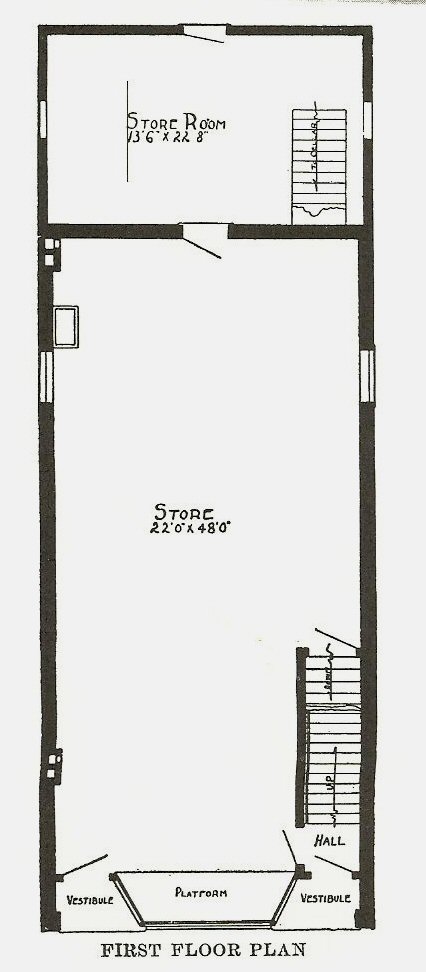 And the accidental 'roof garden' on top, which wouldn't have been set up by an architect.
And the accidental 'roof garden' on top, which wouldn't have been set up by an architect.
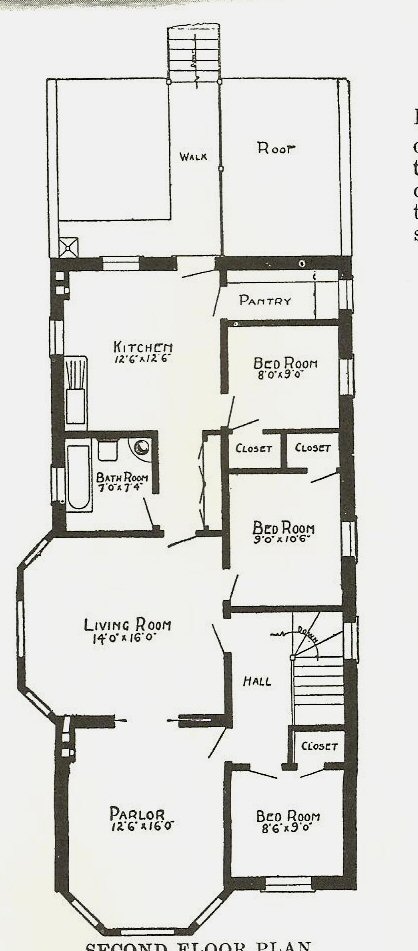
 And inside the little Box Depots:
And inside the little Box Depots:
 Here's an example of the typical use on a house:
Here's an example of the typical use on a house:
 = = = = =
On a house, the Beadboard Zone, even when built at the same time, was lighter and looser than the Plaster Zone. Usually the Beadboard Zone was on concrete blocks or piers, while the Plaster Zone was on a real basement.
Because it was an add-on, it's hard to find Beadboard Zones in old books of house plans. I have lots of Dover plan books, and I've only found two examples.
Here's the typical add-on, sold separately by Aladdin:
= = = = =
On a house, the Beadboard Zone, even when built at the same time, was lighter and looser than the Plaster Zone. Usually the Beadboard Zone was on concrete blocks or piers, while the Plaster Zone was on a real basement.
Because it was an add-on, it's hard to find Beadboard Zones in old books of house plans. I have lots of Dover plan books, and I've only found two examples.
Here's the typical add-on, sold separately by Aladdin:
 And here's a unique experience-based plan from a book of 1910-ish plans:
And here's a unique experience-based plan from a book of 1910-ish plans:
 An architect wouldn't design a building this way. If the store was intended to have a storage room on the back, an architect would include it in the main walls. This plan must have been drawn from a real structure 'as built'.
You can see the different thickness of the walls:
An architect wouldn't design a building this way. If the store was intended to have a storage room on the back, an architect would include it in the main walls. This plan must have been drawn from a real structure 'as built'.
You can see the different thickness of the walls:
 And the accidental 'roof garden' on top, which wouldn't have been set up by an architect.
And the accidental 'roof garden' on top, which wouldn't have been set up by an architect.

Labels: Leth
